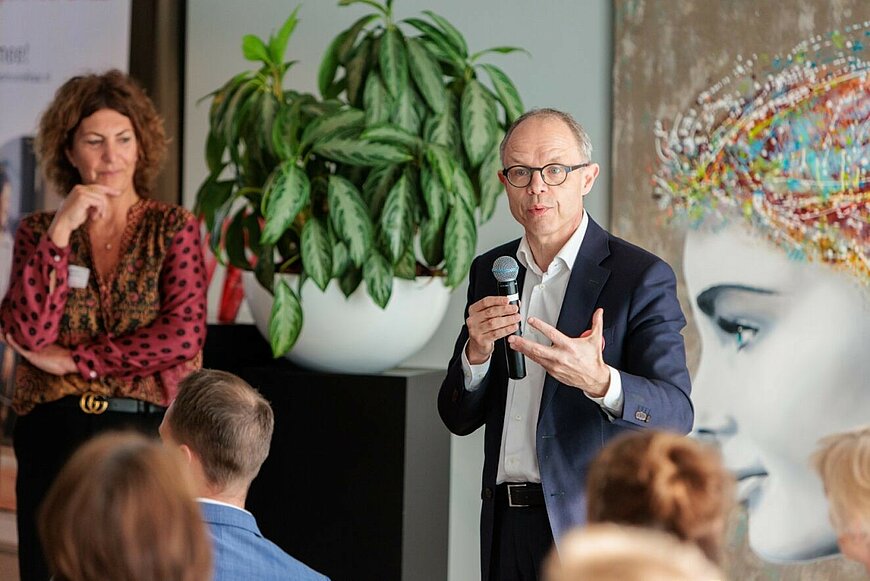'We are going to make Brainport for Each Other a success, with the same ambition as for the economic agenda'

Brainport for Each Other will become an association. This will enable all member companies, educational institutions, governments and social organisations to work even more decisively to make the Brainport region more social and better.
Meanwhile, we are obviously not sitting still and are pleased to announce that Marc Cootjans is the intended chairman of our executive committee. He represents the business community and has the ambition to make our region a great social success. Marc will be happy to tell you more.
'As Rabobank, we are a cooperative. Social involvement is a matter of course for us, since 125 years. I myself have long been involved in two of the founding organisations of Brainport for Each Other, Impact040 and Partnerfonds Brainport Eindhoven. When it was decided to turn Brainport for Each Other into an association and a board was needed, the question came up: would you like to be the chairman of the executive board? Well, gladly! I wholeheartedly support the objectives of Brainport for Each Other.
I like the fact that we are now becoming an association. That word association really radiates that we are going to do it together. We focus on employers in the Brainport region. And these are not only companies, but also schools and knowledge institutions, municipalities and social organisations. On the board, I represent the business community. Logical, given my contacts.

Our members focus on their own employees. These can get help, for instance to become financially fitter or to increase their digital skills. It is often difficult to reach people who need help, but companies know their own people well and can pick up signals that someone needs help. That is one of the components of Brainport for Each Other. We also encourage our members to employ people who find it hard to get a job. A third, very important branch: using corporate volunteers for socially important causes. And not just once to the old people's home for a cosy activity, but structurally. For example: in a municipality, making sure the transport of schoolchildren is in order by employing people from your company as drivers during working hours and organising this well. 400,000 people work in the Brainport region; if they all contribute something, the effect is enormous!
As far as I am concerned, being a social employer is more relevant than ever. The Brainport region is doing incredibly well economically. But not everyone benefits from this. The resulting dichotomy is a real problem. I am proud that we are going to solve that problem in the Brainport way. Everyone realises: a lot has to be done. Just as we previously made Brainport an economic success by working together as companies, governments and knowledge institutions, and are now considered best practice throughout Europe. We are going to do the same on a social level, in the same way and with the same ambition. And that is desperately needed.'